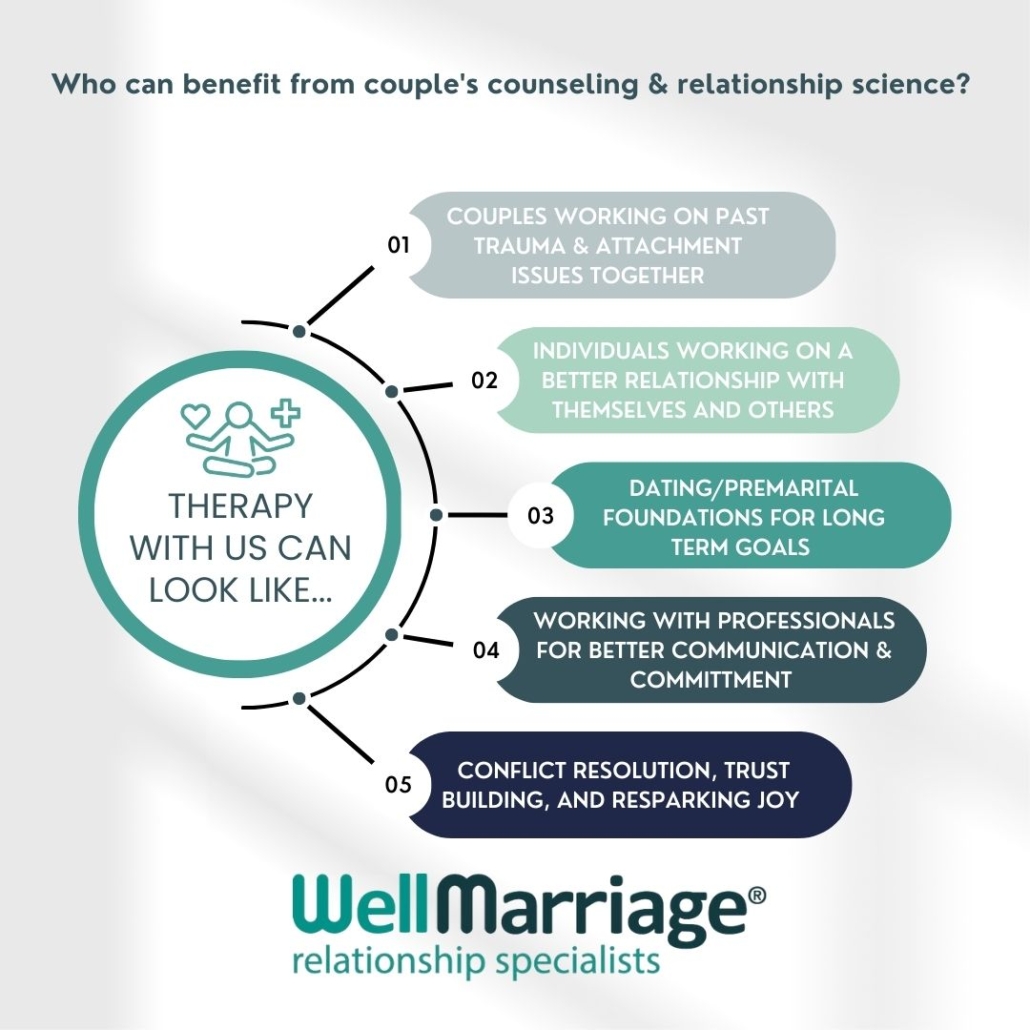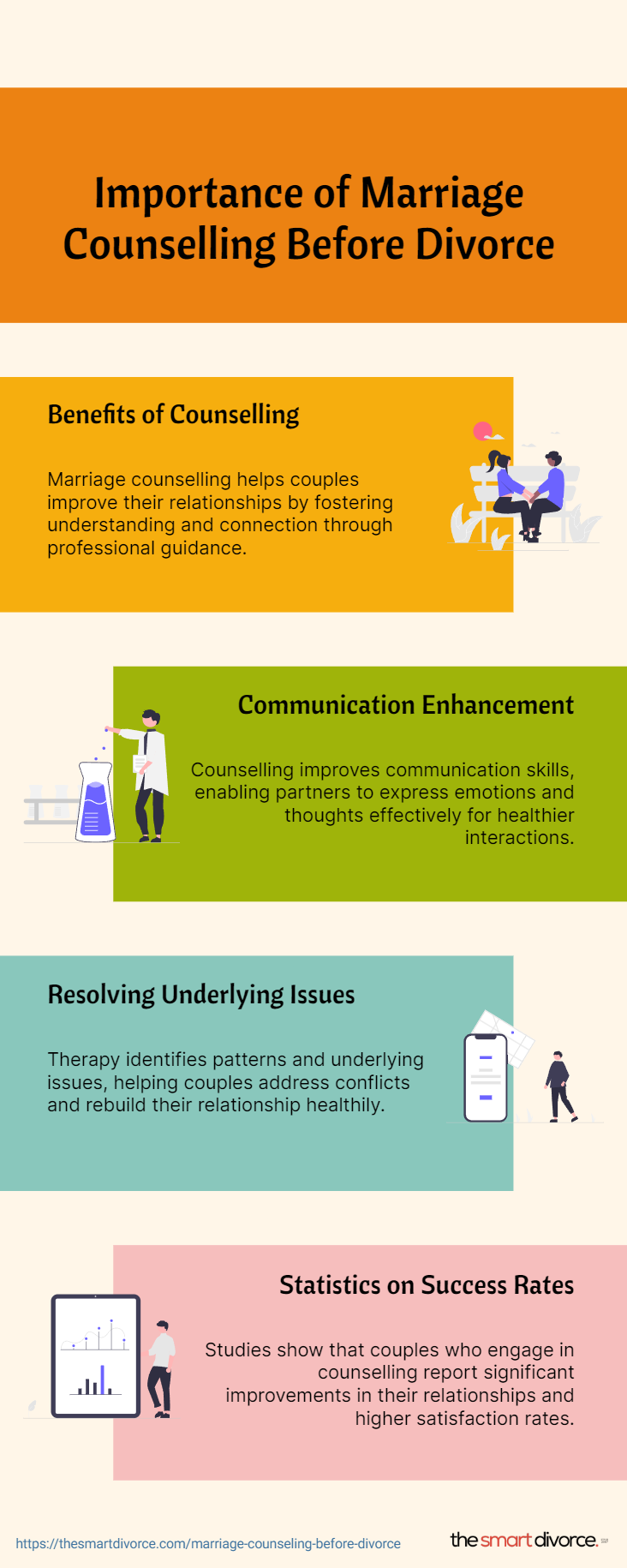Getting My Aim Point Counseling To Work
Getting My Aim Point Counseling To Work
Blog Article
The Buzz on Aim Point Counseling
Table of ContentsAim Point Counseling Things To Know Before You BuyNot known Details About Aim Point Counseling Aim Point Counseling - An OverviewThe smart Trick of Aim Point Counseling That Nobody is DiscussingThe 7-Minute Rule for Aim Point CounselingAn Unbiased View of Aim Point Counseling
The longitudinal style involves a pre-treatment survey and two follow-up studies at 3- and 12-months post-intervention. The study is established in eight Relationships Australia Victoria centres, throughout cosmopolitan, outer suburban areas, and regional/rural websites. Relationships Australia, a non-government organisation, is the biggest supplier of couple therapy and partnership services in Australia.
These high rates of connection malfunction have been constantly linked with adverse wellness repercussions for both grownups and kids complying with divorce/separation.
The 6-Second Trick For Aim Point Counseling
Longitudinal studies additionally suggest that kids of divorce have a greater occurrence of mental disorders, alcohol and drug usage, and dangerous sex-related practices [7] The impacts of divorce and splitting up can be harmful, study suggests that high partnership disharmony in undamaged couples is additionally likely to have unfavorable results.
Study to date has determined both couple and private aspects that might contribute to connection discord. These include connection satisfaction and dedication at the couple level, and depression at the individual level.
The 3-Minute Rule for Aim Point Counseling
While a lot of researches indicate improvements in connection satisfaction following couple therapy, they are restricted by the examples and procedures made use of, largely short-term follow-up time frames, and analyses that do not account for the dyadic nature of couple data., is one more generally investigated connection outcome.
To summarise, research study suggests that couple-specific variables in addition to private aspects might anticipate the end results of pair therapy and connection services. The causal direction of these relationships, nevertheless, is much less clear. These monitorings are very important, since, to justify and guide the application of partnership solutions such as pair therapy, empirical evidence has to discover both the end results of connection services and the factors that predict successful treatment.
Therefore, there is a growing agreement that effectiveness research studies need to be enhanced by efficiency research study to best inform professional method [ 29] The restricted effectiveness study that exists to day suggests that pair coaching can enhance outcomes such as partnership satisfaction [33,43], interaction skills and basic well-being [44], at the very least in some European nations.

We presently recognize little concerning the profiles of couples that look for out relationship education compared with those that look for connection coaching, or the results of these programs. Unscientific proof suggests that there may be significant distress amongst at the very least some couples seeking connection education and learning.
The smart Trick of Aim Point Counseling That Nobody is Talking About
Feedback entails individuals completing sets of questions about their partnership (e.g. measures of social issues), and receiving information on what their ratings indicate. Cognitive-behavioural strategies advertise changing cognitions to promote positive relationships. These might include promoting practical attributions/expectations around unfavorable companion practices [46] Lastly, in skills training, pairs attend talks or presentations on relationship abilities, and practise these throughout facilitator-led activities [ 45]
These effects have lingered for up to 4 years in some research studies [47] These meta-analyses highlight constraints in the current literature on relationship education and learning. Especially, most of research studies entailed pairs from upper socio-economic backgrounds that were not experiencing high partnership discord [47,48] This example account might not represent customers that normally provide for relationship education.
The 7-Minute Rule for Aim Point Counseling

Very little research has actually taken a look at the comparative benefits of pair therapy and connection education programs. As clients are most likely to self-select into these service my company kinds, it is unclear whether characteristic relationship distress accounts present to each service kind, or undoubtedly whether there is an interaction between providing profile, solution type and end result.
(https://www.twitch.tv/a1mpoint/about)
Therefore, we have actually included a 12-month follow-up to evaluate longer-term trends and impacts. The study uses a variety of standard end result procedures considering that some prior examinations have actually been criticised for their absence of standardised assessment [50] The usage of statistical evaluations that think self-reliance of data, such as t-tests, or ANOVAs, has actually been widespread in previous research studies [ 44,49]
We suggest to utilise multi-level analytical modelling procedures that regulate for the inter-dependence of couple information to evaluate any kind of treatment results. The certain objectives of the ECC research study are to: 1. Map accounts of clients looking for area agency-based couple counselling vs. relationship enhancement programs in terms of socio-demographic and relationship signs (such as partnership contentment, partnership dedication, social issues, and reasons for attending), in addition to health (such as anxiety, basic wellness) and wellness service use (eg.
Establish whether couple counselling and relationship education and learning solutions enhance 3- and twelve-month results for connection fulfillment, commitment, and depression, using statistical analyses ideal to couple data. how much does marriage counseling cost. Figure out the relative contributions of client elements (private and pair) and therapy/education factors to end results at 3- and 12-months, and to sustainability of outcomes over time.
The Buzz on Aim Point Counseling
Multi-level modelling to determine pre-post distinctions, controlling for dyadic (couple) level. To add to the literature analyzing the efficiency of community-based pair counselling.
Report this page